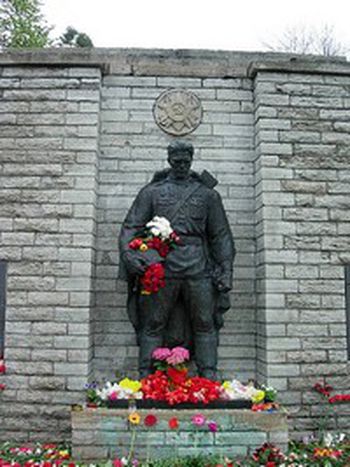
Tallinn's Soviet soldier removed
Published on
Translation by:
 eleanor forshaw
eleanor forshaw
On April 26, the government's controversial removal of the 'Bronze Soldier' statue provoked violence from angry Estonian Russians
On April 26, Tallinn saw one death, over 40 people injured, and over 300 arrests after the Estonian authorities controversially removed the 'Bronze Soldier' statue from the centre of the capital to a military cemetery outside the city.
The Estonian state seems to have committed political semi-suicide amidst protesting from a large portion of the 350, 000 ethnic Russians, who stayed in the country after the withdrawal of Soviet troops in 1991. The decision to remove the statue, erected in 1947, and originally known as the 'Monument to the Liberators of Tallinn', was taken in February. It commemorates the fallen Russian soldiers during the Second World War.
For some, it was unacceptable that a symbol of the occupation remained in the centre of Tallinn. For others, however, it was a simple choice of home security, despite the overnight violence at the site. Indeed, the Bronze Soldier at the foot of the old city had often been the theatre for skirmishes, as was shown on 30 March this year.
'This is how you encourage Nazism'
The little Baltic republic, currently celebrating the third anniversary of its accession to the EU (1 May 2004), is having trouble forgetting its past under Soviet occupation – and this has not come to light only because of the fiery controversy over the Bronze statue. In March, parliament adopted a new provision regarding the better integration of the Russian minority, representing 20% of the population. By modifying the Estonian Law on Language, it will be easier to make redundant employees who do not have a sufficient level of understanding of the Estonian language.
In the meantime, the Kremlin is not just standing by. The issue of the statue of discord led it to speak of 'state vandalism' through its prime minister, Sergei Ivanov, 54. The Russian government asked its citizens to boycott all 'made in Estonia' products, threatened cuts to energy supplies, and actually accused Tallinn of 'encouraging Nazism.' Even the seventh Secretary General of Amnesty International, Irene Kahn, chose to publicly criticise Estonian government policy, declaring it 'repressive and punitive.'
'For us, the Second World War ended in 1991'
And that is not all. The internationalisation of the Russian question in Estonia also reached the European parliament. On 14 March, the Italian Communist European deputy Marco Rizzo, 47, promoted a point of order for the intervention of Europe on the 'monumental' question. A few days later, it was the turn of neighbouring Latvia, also host to a large Russian minority. Riga has taken its distances, declaring that it has no intention of following Estonia’s hard line.
Estonia, therefore, seems even more isolated and divided. Kalle Laanet, 43, Estonian Home Affairs minister until the March 2007 elections, has not taken international criticisms very well. 'We respect Amnesty International, but this time, the government has done a lot for the social integration of 'non-Estonians', like free exams and courses, millions of Euros invested in teaching the language, and a reform of the educational system which will come into force in September this year. But there is no good will from the other side.'
She is hard about the Bronze Soldier. 'As far as we are concerned, the Second World War began with the Soviet occupation in 1940, and ended with independence in 1991. For half a century, there was no freedom, only a succession of totalitarian regimes. And even if this monument takes on different meanings for our people, it is still used by the extremists for their chauvinistic designs.'
This opinion is not shared by Ludmilla Matrossova Zõbina, president of the Union of Slavic Educational and Charity Organisations, one of the most important organisations in Estonia. 'Every time I used to see it, I got emotional. I am of Russian origin and I cannot and will not change that, even though I do also feel Estonian. Is it that so hard to accept? Politics really do not help. Discriminations come from there, from the highest level of society, which should instead be trying to change things.'
But the radicalisation of the positions between Estonians and Russians fades when the young people of the country take their turn to speak. 21-year-old Jelena, despite her Russian origins, says, 'If they wanted to move the monument, they should have just done it and stopped talking about it. I understand their problems and their points of view, but it really isn’t that strange an idea.' That is exactly the opposite to what Tina thinks, a young Estonian who lives right next to where the 'monument of discord' used to be, and is closer to the Russian way of thinking. 'I don’t understand why they moved it. It has always been there and problems only really started when government talked about removing it. Why create problems when they could very simply not exist?'
Translated from «Rimuoveremo il milite sovietico»: è guerra (di parole) tra Estonia e Russia


